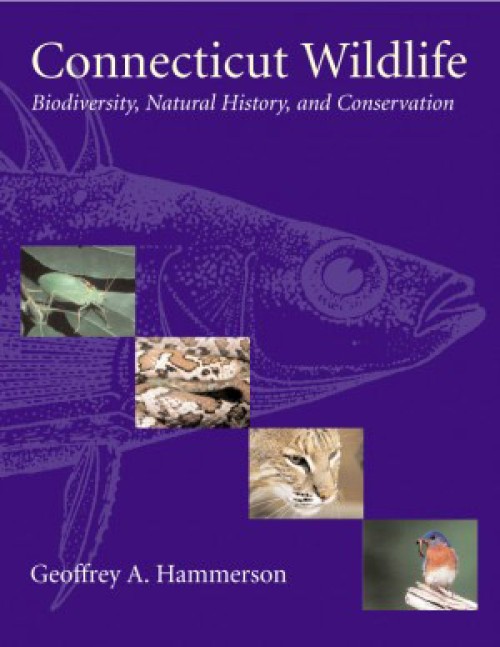by By Geoffrey A. Hammerson
University Press of New England, 2004
Did you know that the eastern cottontail was introduced from the southern U.S. and may be displacing our native New England cottontail? Or that eastern newts can use Earth’s magnetic field and polarized light to orient themselves in the landscape? In Connecticut Wildlife, Geoffrey Hammerson has not only written species accounts filled with such interesting information but also provides an overview of ecological relationships in this gem of a reference book. He describes the book as “a progress report on ecosystems and organisms about which we know little and will not be the same tomorrow as they are today.”
The book first gives the reader an introduction to the landscape, including geology and geography, as well as human impact on it. A short chapter on seasonal changes and climate is followed by chapters on each of the state’s major ecosystems and their habitats: coastal waters and wetlands, streams and associated wetlands, lakes and ponds, inland wetlands, and uplands.
The next 14 chapters examine each major life form, from algae, fungi, and lichens to mammals. Noted examples of Connecticut plants and animals found in each group are described. He discusses introduced and invasive species and how they currently affect biodiversity, as well as reproduction, survival strategies in winter, food and feeding, and, very importantly, current status and conservation.
The author, a research zoologist and professor of ecology and natural history, has clearly spent much time outdoors observing Connecticut’s wildlife. He often reports on where and when he has seen various species of flora and fauna. Many naturalists like to keep track of wildflower blooming times, bird migration dates, and when frogs are vocalizing – the science of phenology. A great resource, as many readers know, is Virginia Barlow’s “A Look at the Season’s Main Events” in Northern Woodlands. Geoffrey Hammerson devotes a full 30 pages to “A Naturalist’s Calendar,” which he compiled from more than 20 years of observation to make a year’s worth of nature’s timings and occurrences. He also includes very useful and well-researched tables and figures, such as “The Reproduction Calendar For Amphibians of Connecticut” and “Connecticut Butterfly Status, Ecology and Life History,” which tells when they are flying, what the larvae eat, and how they spend the winter.
This book is valuable for students, educators, and conservationists. It is practical not only for those of us in southern New England but for our northern neighbors as well, since there is so much overlap in plant and animal ranges. It should be on every naturalist’s shelf.


